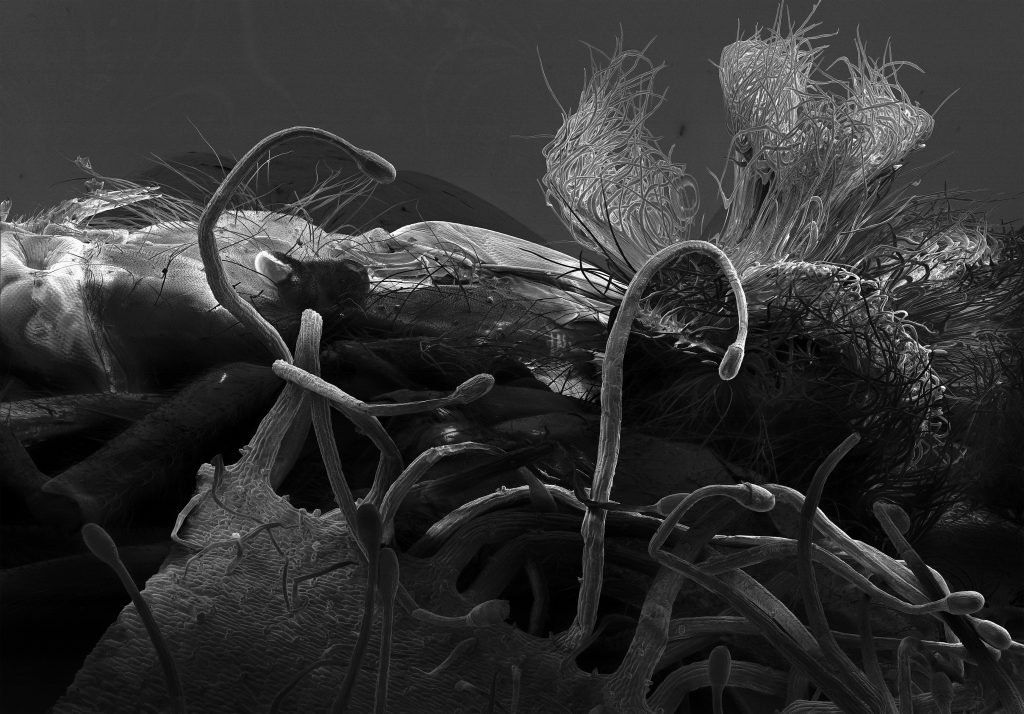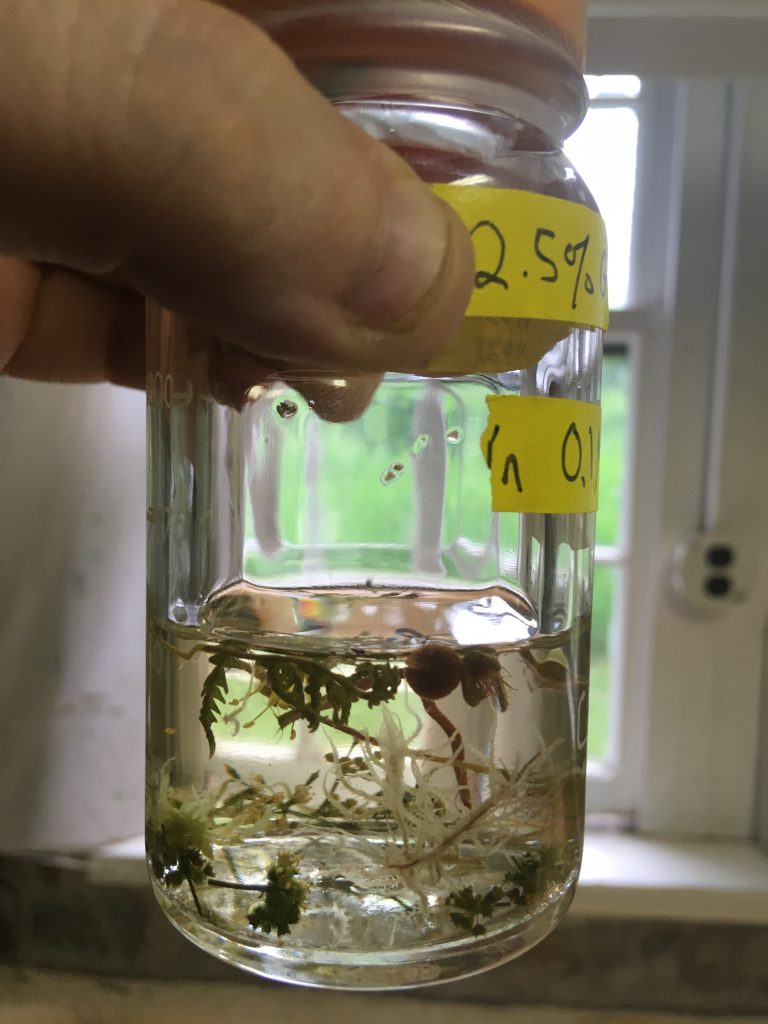back to nature
by Jess Holz

I spent much of the week looking at plankton with the microscope I brought along. From the samples collected around the lab, I was amazed at how similar the zooplankton looked to central Wisconsin. I saw many of the same types of copepods, cladocerans, rotifers etc. I made a sort of plankton kaleidoscope video with some of the footage I took. I love the way they move, so fast!
Plankton Ballet from Jess Holz on Vimeo.
I ran plankton videos I captured through some software I wrote for light painting, resulting in trails of these highly mobile critters. It is a record of the path they take and the speed- slower plankton appear as a continuous trail, faster plankton appear as discreet dots. I later made cyanotypes of these trails, juxtaposing the microscopic with human scale plants. I also made cyanotypes of some video stills.




The highlight of the week was going to dead man’s lake with Paul Weihe’s class. Dead mans lake has a bog on one side, a lake on the other. We climbed across a downed tree to get onto the bog. The peat was difficult to walk on. We managed to find wild sundew, of the genus Drosera, a carnivorous plant which I’ve used many times in my electron microscopy work.


^Drosera

^SEM micrograph with Drosera tendrils in the foreground, a dragonfly head and leaf in the background.
Previously I’ve gotten Drosera from the greenhouse, but it was fascinating seeing it in its natural habitat. It’s quite beautiful. I took a few samples with tiny insects trapped and put them into fixative- I’m excited to look at them with the electron microscope when I get back.

I watched Paul’s class take various measurements of the acidic bog water. I’ve worked in the biomedical sciences, but fieldwork is very different. I’ve always wanted to do fieldwork, but one must get acclimated to being out in the elements. On this trip I got badly sunburned, and on the way back, I managed to step into a hole in the peat layer, falling into the bog up to my thigh, and almost loosing my boot. But I got out 🙂
We also took some water samples with the of the lake adjoining the bog with the plankton net. Here I learned how to do a proper plankton tow, and how they would go about quantifying plankton. Paul gave me a plankton sample from the lake and it was absolutely crawling with critters. When we got back I immediately took it to my microscope. The plankton was very different. I found many exciting things, like some very demonic looking larvae, and some giant rotifers (below).
critters from Jess Holz on Vimeo.

^Gastrotrich (bigger than I’ve seen before).

^Predatory phantom midge larva (Chaoborus)

^Rotifer colony (left) next to a giant rotifer (right) with a smaller, pregnant rotifer in its belly.
^Found several of these spinning plankton in the lake next to the bog, I have yet to identify them.




